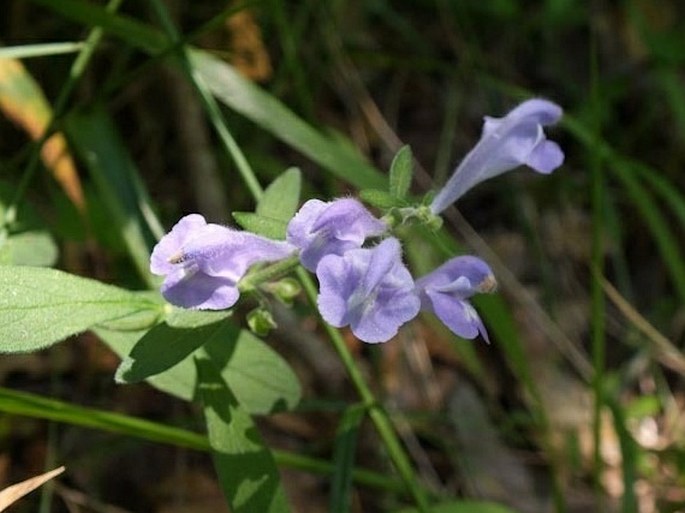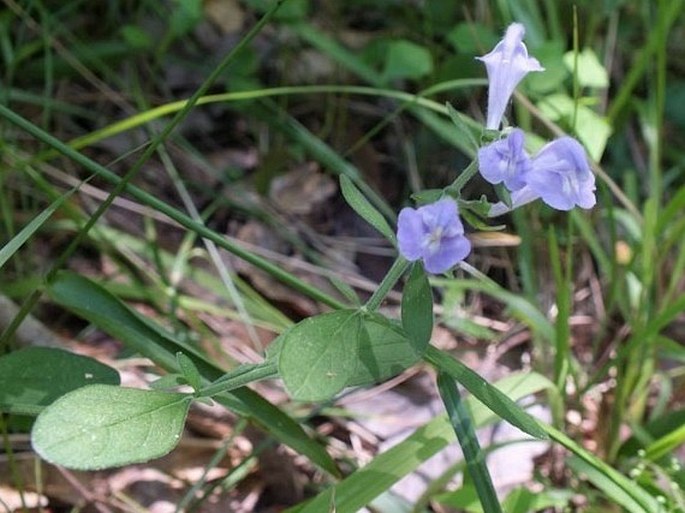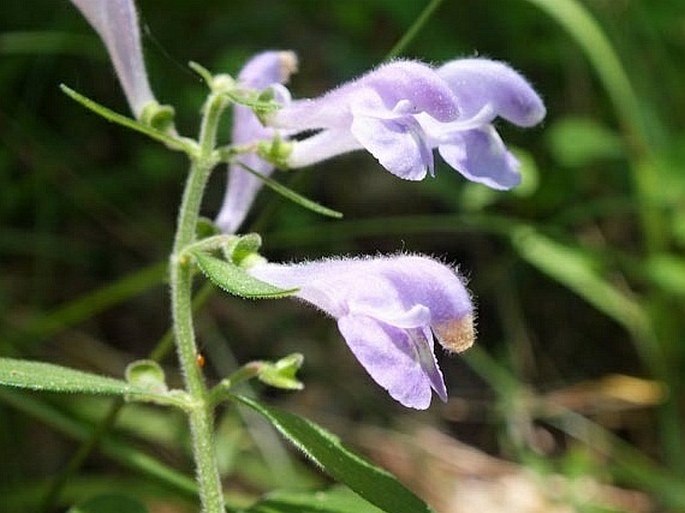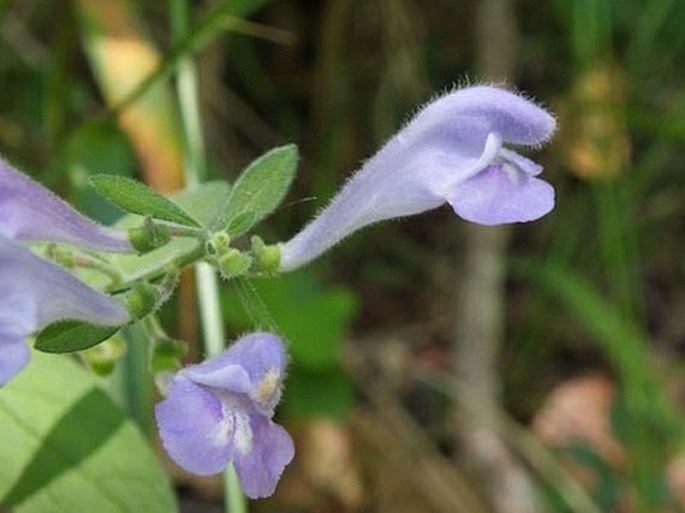Syn.: Scutellaria caroliniana Lam., Scutellaria hyssopifolia L., Scutellaria polymorpha A.Ham.
Family: Lamiaceae Martinov

Distribution: North American species from eastern part of the continent from Pennsylvania along Atlantic coast to eastern Texas, westward from Ohio to Arkansas, rare in New York and Oklahoma.
Ecology: Found in fields, open woods, margins of woods, mostly in low elevations. Blooms in late spring and early summer.
Description: Short-lived perennial herb, 20–60 cm tall, from fibrous roots. Stems erect, usually branched at base, square in cross section, finely hairy. Leaves opposite, basal ones often coarsely toothed, 1–3 cm long, upper leaves smaller, smooth margins, finely woolly; stipules highly variable in size. Flowers in axils of leaves and in a small terminal cluster, petals fused into a tube, short pedicels, blue, lavender, pink, occasionally white, 2-lipped, about 5 cm long, with glandular hairs on corolla tube and calyx, stamens and pistils hidden in the hood-like upper lip, lower lip with irregular edge. Calyx has a bump on the upper surface. Fruit is a one seeded nutlet, 1–1.5 mm, dark brown, covered with thick scales; 4 per ovary.
Threat and protection: This species is listed as endangered in states of New York and Connecticut.
Note: This plant was used by native tribes as medicinal herb to stimulate blood flow (emmenagogue).



These images were taken in USA, Louisiana, Fontainebleu State Park (May 2014).


